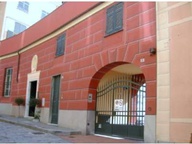Il Museo universale. Dal sogno di Napoleone a Canova

Dal 16 December 2016 al 12 March 2017
Roma
Luogo: Scuderie del Quirinale
Indirizzo: via XXIV Maggio 16
Orari: Da domenica a giovedì 10-20; venerdì e sabato 10-22.30; l’ingresso è consentito fino a un’ora prima dell’orario di chiusura
Curatori: Valter Curzi, Carolina Brook, Claudio Parisi Presicce
Enti promotori:
- MiBACT
Costo del biglietto: Intero € 12, Ridotto € 9,50. Ingresso gratuito fino ai 18 anni. Biglietto Open € 16. Biglietto studenti università italiane € 4 (venerdì e sabato)
Telefono per informazioni: +39 06 39967500
E-Mail info: info.sdq@palaexpo.it
Sito ufficiale: http://www.scuderiequirinale.it
Nel 2016 ricorre un anniversario di fondamentale importanza per la storia civile e culturale dell’Europa e, in particolare, dell’Italia.
Risale infatti al 1816 il rientro a Roma dei capolavori artistici e archeologici dello Stato Pontificio requisiti dai napoleonici. Questo episodio fu preceduto e accompagnato dal recupero da parte di altre amministrazioni della penisola di molti degli oltre 500 dipinti che, tra il 1796 e il 1814 nel corso delle campagne militari francesi, erano stati prelevati dai territori italiani, inviati a Parigi e selezionati per essere esposti nel nascente Museo del Louvre.
Contemporaneamente al rientro delle opere migrate in Francia, l’Italia tutta si troverà a interrogarsi per la prima volta sul destino di migliaia di opere d’arte che avevano abbandonato chiese e conventi a seguito della soppressione degli ordini religiosi nei primi anni dell’Ottocento. La fortuna del Museo del Louvre come museo universale, le perdite di alcuni capolavori rimasti in Francia, ma soprattutto la demanializzazione di una vera e propria massa di opere d’arte accumulatesi in depositi improvvisati, alimentarono un dibattito vivace sul valore pubblico del patrimonio artistico, favorendo l’apertura di musei ancora oggi tra le realtà più significative del Paese: è il caso, ad esempio, della Pinacoteca di Brera, delle Gallerie dell’Accademia di Venezia o della Pinacoteca di Bologna.
E’ all’interno di questi come di altri musei, in Italia e all’estero, i quali osservarono con interesse l’esperienza del Louvre, che si procedette a una rivisitazione della storia dell’arte con avanzamenti significativi sia sul piano critico, sia nella valorizzazione del patrimonio culturale.
L’interesse della mostra è dunque quello di ripercorrere le tappe salienti della vicenda storica, ma soprattutto di restituire una lettura critica in grado di sensibilizzare oggi il pubblico al valore che assunse allora il patrimonio culturale nazionale, visto per la prima volta come strumento principe di educazione del cittadino e, insieme, perno di una comune identità europea.
Tale lettura è sembrata ancora oggi di stringente attualità, per cui l’esposizione si pone anche come occasione per riflettere sul patrimonio culturale come terreno privilegiato per la definizione di una lingua comune dell’Europa.
SCARICA IL COMUNICATO IN PDF

-
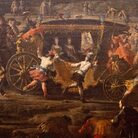 Dal 20 December 2025 al 20 April 2026
Caserta | Reggia di Caserta
Dal 20 December 2025 al 20 April 2026
Caserta | Reggia di Caserta
Regine: trame di cultura e diplomazia tra Napoli e l’Europa
-
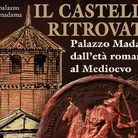 Dal 19 December 2025 al 23 March 2026
Torino | Palazzo Madama - Museo Civico d’Arte Antica
Dal 19 December 2025 al 23 March 2026
Torino | Palazzo Madama - Museo Civico d’Arte Antica
Il castello ritrovato. Palazzo Madama dall’età romana al medioevo
-
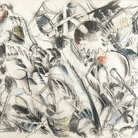 Dal 17 December 2025 al 19 January 2026
Roma | Palazzo della Cancelleria
Dal 17 December 2025 al 19 January 2026
Roma | Palazzo della Cancelleria
De Humana Mensura di Linda Karshan
-
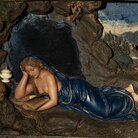 Dal 18 December 2025 al 12 April 2026
Firenze | Gallerie degli Uffizi
Dal 18 December 2025 al 12 April 2026
Firenze | Gallerie degli Uffizi
Cera una volta. Sculture dalle collezioni medicee
-
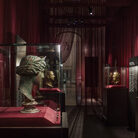 Dal 11 December 2025 al 9 April 2026
Firenze | Museo Archeologico Nazionale di Firenze
Dal 11 December 2025 al 9 April 2026
Firenze | Museo Archeologico Nazionale di Firenze
Icone di Potere e Bellezza
-
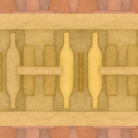 Dal 11 December 2025 al 11 January 2026
Roma | Palazzo Esposizioni Roma
Dal 11 December 2025 al 11 January 2026
Roma | Palazzo Esposizioni Roma
Giorgio Morandi nella Collezione Eni. Un viaggio attraverso la storia culturale del cane a sei zampe e l’eredità di Enrico Mattei


